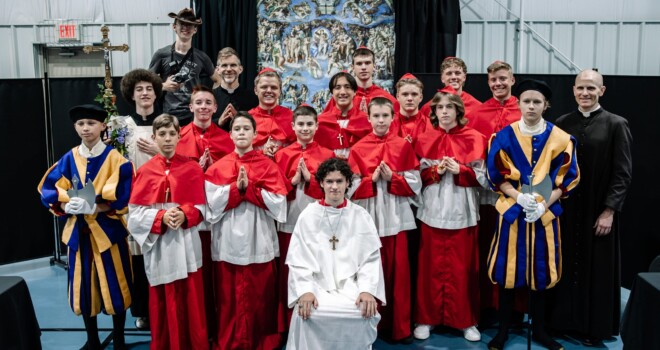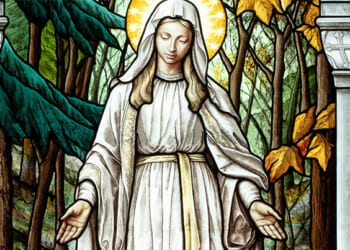I was privileged to interview Fr. Jonathan Meyer last week. Fr. Meyer was ordained a priest in 2003 for the Archdiocese of Indianapolis. After his ordination he served as the Director of Youth and Young Adult Ministry for the Archdiocese. He has also served at several parishes, prior to being named as the pastor of four parishes in Dearborn County, IN. He maintains a presence on the internet with weekly homilies, seasonal reflections, and other teachings. He has written and published two children’s plays and recently wrote a chapter for Dynamic Catholic’s book, Beautiful Hope. In 2022, he began ministering as a National Preacher for the Eucharistic Revival. Fr. Meyer also recorded videos on 33 Days to Eucharistic Glory. In his spare time, he coaches Track and Cross Country at public schools and has been for the past 12 years. Following is a transcript of the interview.
How did the inspiration to act out the conclave come about?
I did a “mock” conclave in 2012. I truly believe that not just young people, but particularly young people learn by encountering, by seeing, by touching. As for myself, as a young Catholic, I always found religious drama, whether it be a Passion play or plays about the parables of Jesus, to be moving. So, why not do this about other truths of our Faith? If we can do this with a Passion or Nativity play, why not with one of the most powerful experiences the Church has in protecting our faith and tradition?
Describe the involvement of the youth.
I did the conclave twice. One of the presentations was in the evening, and I relied solely on volunteer altar servers from my parish. So it was a voluntary participation, and they had to get themselves physically there. The other one I did with my Catholic school, so all children participated. The young people played all the roles of the pope who died, the pope who was elected, the medical staff and team that pronounced the pope to be dead, the camerlengo, Swiss Guards, tailors, press and media; I had a list of roles for everybody to play. We filled all of them. I had all of the non-clerical roles played by the girls. I wanted everyone to participate. They loved it.

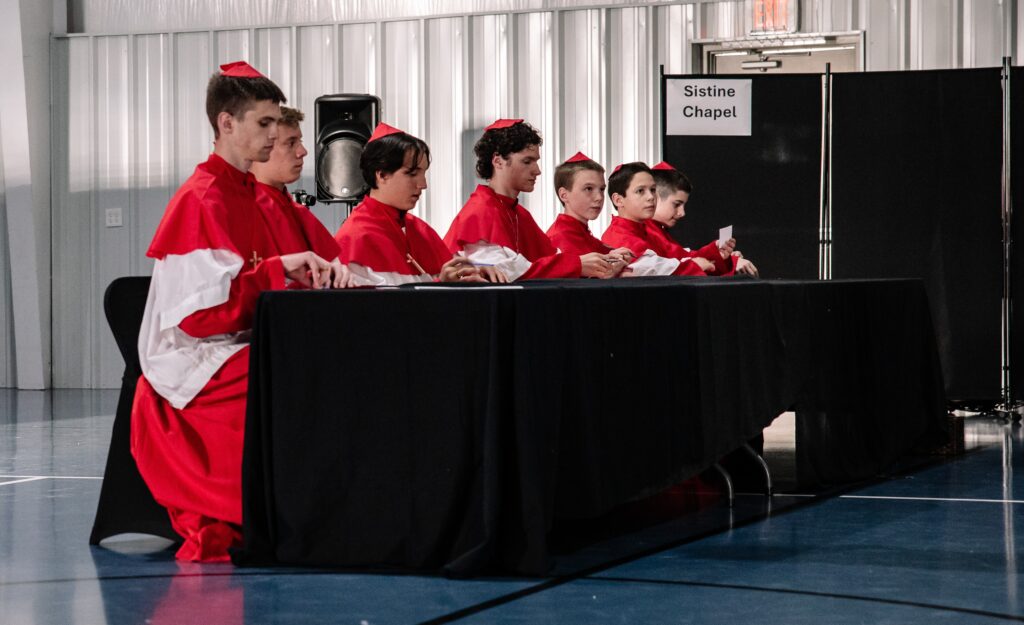
I always was so impressed because they are so reverent. The young people knew that something very serious was happening. Even though they are 12 to 16 year-olds, they played an important role no matter what that role was. In a general sense, the young people were just parishioners in my parish who were willing to take part and be involved.
What did the young people learn in the process?
The kids, particularly those playing the roles of the cardinals in the election process, realized that the Church has a lot of intentionality, and that the intentionality is there for a reason. Every tradition to its minute detail really does matter. They also realize that there is a tremendous respect for life, in the pope with his death and burial. We speak of this in terms of the unborn but also the way we reverence the body at death. There should be an awe and reverence in birth and an awe and reverence in death. There is joy at the birth of a child and joy at the birth of a new pope. That gym, when we elected the new pope, I’ve never seen my third, fourth, and fifth graders so excited. They were yelling—it was awesome. [Those who gathered were] mainly school children, faculty, and the staff.

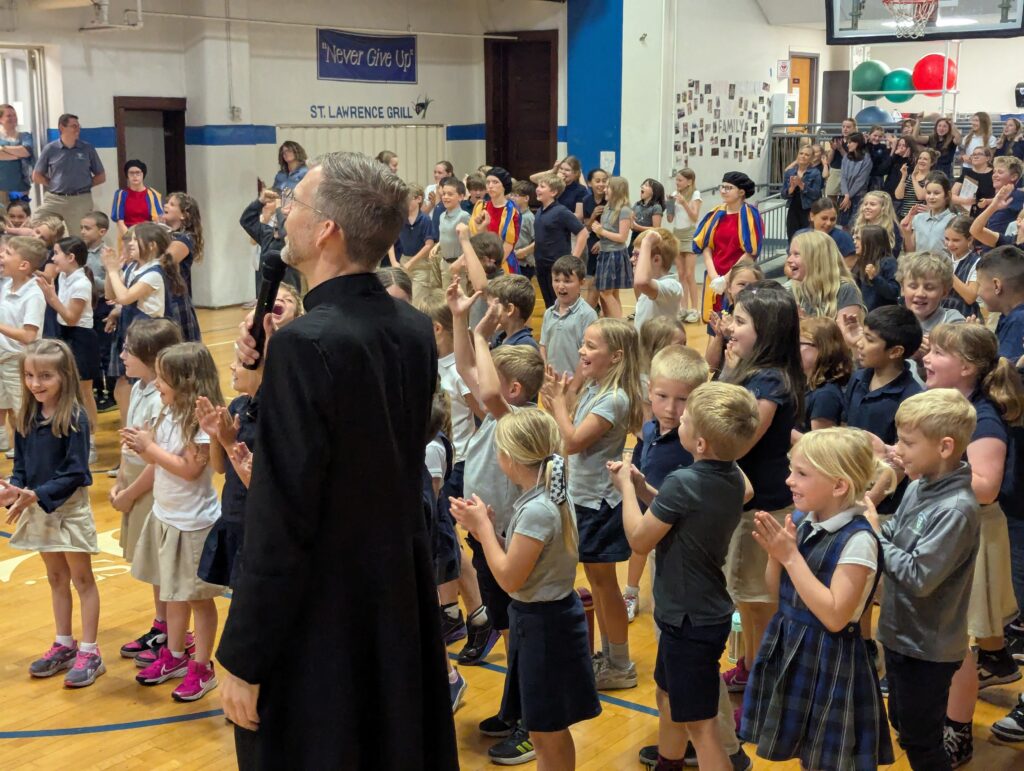
In the evening, whole families were there, married couples came, and young adults came. That was a way for me to catechize. I wanted them to know that the Church really does have an unbroken link of teaching, of Faith, and that we as her members really should have an awe and reverence toward all of this. I want them to have a deep trust in the Church, and we should trust that this Tradition of passing on the teaching authority and the rituals that surround it do matter because they give us certitude that this is the Church that Christ entrusted to us.
I wanted them to walk away from this knowing: it isn’t just pomp and circumstance. This does have meaning. The whole world is looking toward the Vatican and to Rome. When they watch it on TV, I want them to know something deeply profound is happening. So how do I teach people to enter into that?
Just as I want people to participate beautifully in the Mass—why we use a chalice veil, why we use bells—the same is true with the election of the pope. Otherwise, we just look at them as though they’re doing something that’s just done every ten to fifteen years.
What were reactions to the event like?
Watching the crowd, you see a sense of engagement and wonder and people genuinely intrigued at why we do what we do. I always found that to be really rewarding. I received an email from a mom the morning after. She said, “My son was one of the cardinals. Thinking about my son, I realized every cardinal has a mother and how human they must be. Since my son was a cardinal, it made me think of that and pray for them like I hadn’t before. Father, that was amazing, I’m so glad we did that.” The Church is talking about creative evangelization. They aren’t just teaching facts but engaging people; it’s teaching about so many aspects of our Faith in a creative way.

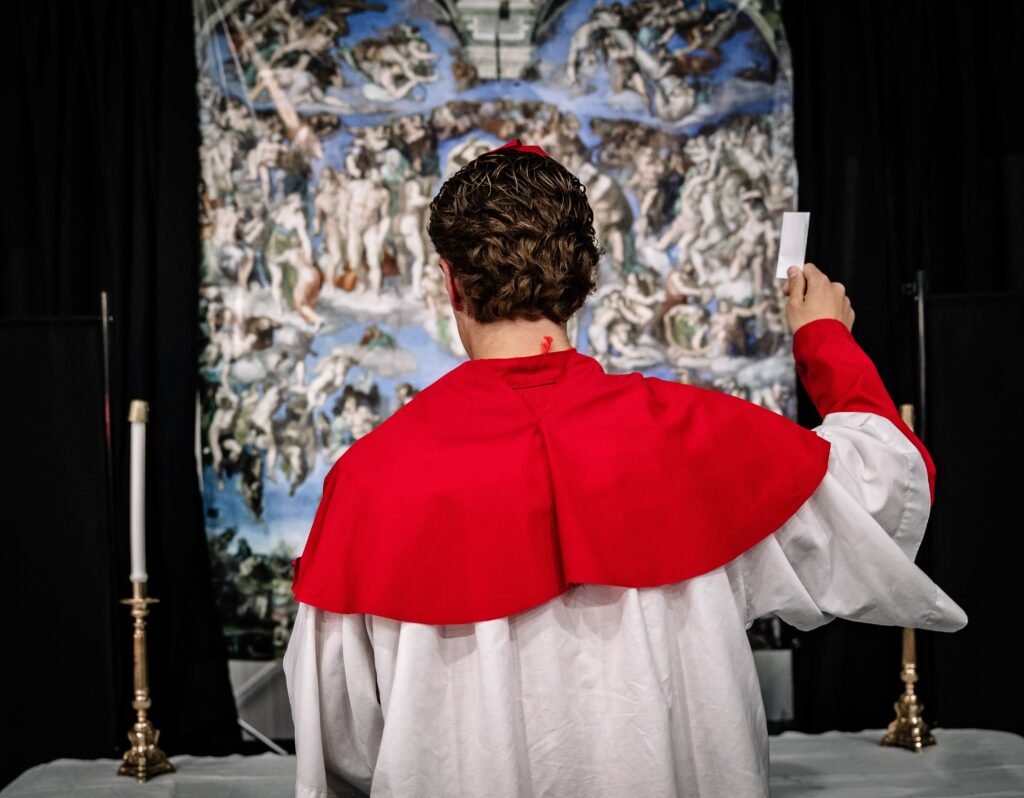
I had the Last Judgment painting (enlarged) for the election. It’s awesome. And the costumes turned out really, really well.
Why is it important that young people, and the faithful in general, understand the interregnum and conclave processes?
This is not about politics—it’s about the continuity of the preservation of the Faith. One thing I love about the Rite of the Conclave is that it really is about Jesus’ Church. At the center is the gospels. They chant the Te Deum when the new pope is elected. It’s about Christ being present in the Church. The pope is the visible Vicar of Christ on earth. It’s about Jesus, this is about Our Lord. It’s not about politics. It’s not about them voting by political parties. This is about them choosing the successor of St. Peter who represents Jesus. It’s a profound concept. In an overly political world, that’s hard for people to understand.
You are a National Preacher of the Eucharistic Revival. Are more frequent participation in the Holy Mass and Eucharistic Adoration vital as we prepare for the election of a new pope?
If I was God and had to ordain it, I would make sure that the Gospel passage of this weekend is the story of Peter and Jesus asking him if you love me. The first pope, Peter, was told to feed the sheep, and Peter feeds the sheep with the very Body and Blood of Our Lord. He feeds the sheep at the Eucharistic Liturgy where Christ gives His very Body and Blood to feed us. I don’t think it gets more profound than that.
At every Mass, except for right now, we mention the pope’s name because we are in union with the pope. If the pope’s name isn’t being mentioned, it’s not a Catholic Mass. He’s a symbol of our unity—it really is profound.
I would do it (acting out the conclave) every day, knowing it would touch one kid’s heart and let them know the Church is real, alive, and really does matter. Why did St. Francis create the Stations of the Cross and Nativity scene? In his prayer and contemplation, he experienced the Christ and wanted others to experience Him too. He knew that tangible experiences matter. I’ve been to Rome and studied, and I want the whole world to know how awesome this is. If I can create that for a child from 1 to 92, then I will. I want people to experience it and know that it is real.

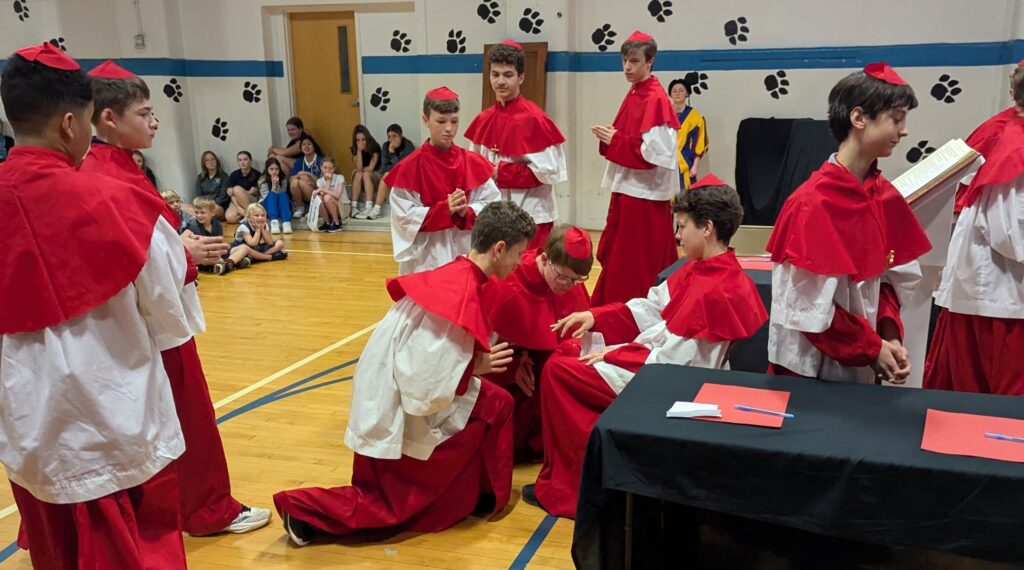
It teaches through experience and encounter—it’s one thing to read about dancing and being a ballerina, it’s another thing going to a ballet. Particularly by watching, there is a different experience. These kids will never forget this. No kid will forget the day he dressed up as a cardinal and elected his friend as a pope. A teen isn’t going to forget the day that they dressed up like the Swiss Guard and went on the balcony. These are deeply embedded experiences. What is happening here is unbelievably unique.
Author’s Note: Fr. Meyer’s mock conclaves may be viewed on YouTube here and here.
Photos provided by Fr. Meyer

